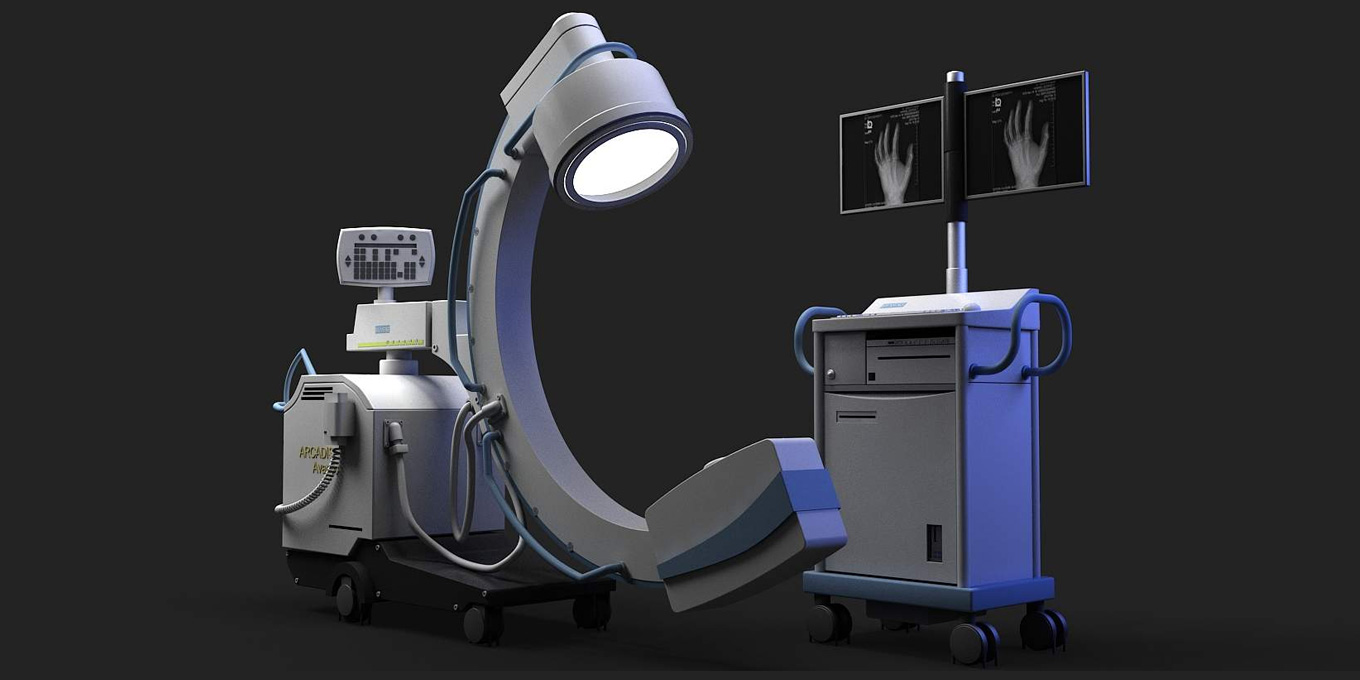A C-Arm machine categorizes itself as an advanced medical imaging device that works on the basic premise of the X-ray technology. They are fluoroscopy machines and are colloquially called as image intensifiers. However, technically, the image intensifier is only a part of the machine and it is called a detector. C-Arm gets its name from the C-shaped arm present in the device, which is used to connect the x-ray source and the detector. These C-Arm machines are widely used during orthopedic, complicated surgical, pain management (Anesthetics) and emergency procedures. Its Fluoroscopy technology enables the device to provide high-resolution X-ray images in real time so that the surgeons can monitor the progress of the procedure and take decisions accordingly. It is a non-invasive device, making it safe both during and after the screening procedures.
What is an X-ray image intensifier?
As the name implies, this intensifier creates images with higher intensity. It converts x-rays into clear visible light better than the ordinary fluorescent screens. With this intensifying effect, low-intensity x-rays are conveniently seen in a brighter manner, helping the physicians to view the x-rayed object more clearly. It produces a clear picture output of what is inside, which is a very important trait needed to do an accurate diagnosis of an issue.
Where is it needed?
C-Arm systems are used in the places where greater flexibility is required. They are being used in Orthopedic procedures, cardiac and angiography studies, and in therapeutic studies including stents and line placements. Since it is an overhead x-ray image intensifier, the physician can get a real-time clear-cut view of anatomic structures of the patients. C-Arm systems are known for its mobility as they can be transported from one place to another. The special semi-circular design enables the physician to move it more freely covering the whole body of the patient and take images wherever required. This arc type C-Arm system is fitted along with the patient table and they are tailor-made for conducting the process of x-ray imaging.
What are the components of a C-arm system?
A general portable C-arm system is usually made up of three parts: X-ray generators, imagingsystem, and workstation unit.
X-ray generator
It is placed inside the frame where the C-arm is mounted. It can be directly controlled by the workstation unit and the operator can even modify the operation of the system in real-time. Even with an increased x-ray power, there is a complete flexibility in imaging and since the exposure time is less, the risk involved here is almost null.
Imaging System
C-arm’s powerful imaging system has the ability to perform multiple movements in a single procedure. This much-needed advantage comes handy during a variety of surgical procedures namely ortho, urology and cardiology. This entire system is very much compact and light in weight so that they will allow multiple positioning along with a wide range of motion. However, they remain firm in the mounted position and there is zero possibility of misalignment in between the procedure.
Workstation Unit
The entire operation of the C-Arm is controlled with the help of this workstation unit. It contains multiple handles enabling movements and positioning, switches that control power supply and light exposure, a cable hanger, controls for radiographic and fluoro settings, several connecting
cables, hard disk and writers, advanced image enhancement software to reduce noises, contrast/bright controls, monitors, zoom control and a brake pedal.
Applications of C-Arm systems
- Various studies including but not limited to digestive, cardiac, ortho, reproductive and blood circulation systems.
- If there is a need to place needles or stents during a complicated surgery, C-Arm will be a handy choice.
- During surgeries, the real-time view of the gallbladder, liver, bone and several structures can be obtained. Multiple views of the same part are possible, thus enabling the systems to reconstruct a 3D model of the inner parts later.
- Surgical navigation is one of the primary applications and they aid in verifying the placement of all types of implant devices in the patient.
- C-Arm systems can also guide a needle placement procedure mainly while injecting anesthetic medicines. They can identify the joints and medication can be inserted perfectly onto the required shoulders and knees without damaging the other structures.
Check out our blog on C-Arm X-Ray maintenance

